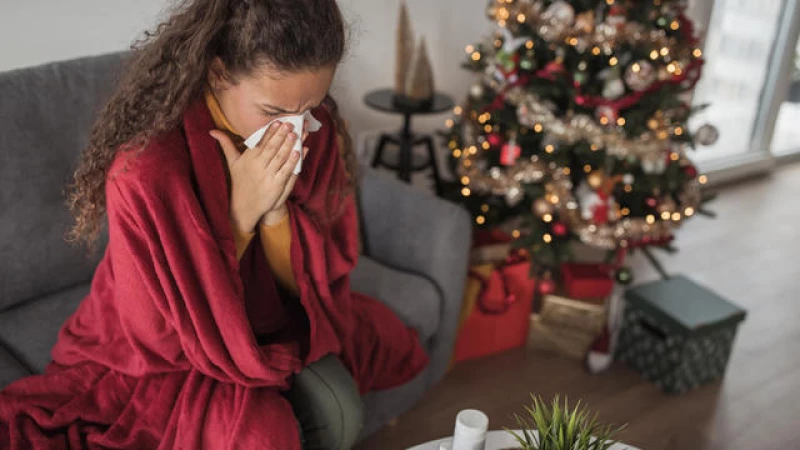'Tis the season for sneezing and coughing — but in some cases, it could be what's inside your house this holiday that's making you feel less-than-merry: your Christmas tree.
Referred to as "Christmas Tree Syndrome," experts say it can cause your indoor allergies to flare up. It's not an allergy to the tree itself, but what's lurking on it.
"When you bring in a Christmas tree into the home, people have worsening allergy symptoms," says Dr. DeVon Preston, an allergist at Cleveland Clinic. He says it's not pine pollen from real trees causing the problem, as people often think.
"It's more of the weed pollens and mold spores that are collecting on the Christmas trees, and then you bring them into the home and then those pollens kind of drop off and make a lot of your symptoms worse," he explains. "People just don't think about the fact that they may need to clean their trees off before bringing them in the home."
Allergy Experts Share Tips for Christmas Trees
Experts advise rinsing off real trees with a significant amount of water and shaking them while still outdoors to remove allergens and irritants. This is especially important for people with allergies or sensitivities.
While having an allergy to pine trees is uncommon, doctors warn that the pine smell can irritate the sinuses and lungs. Dr. Mark Millard, a pulmonologist at Baylor Scott & White Health, explains that live trees can harbor mold, which can trigger allergic reactions.
If you have an artificial tree, you're not necessarily in the clear. Allergens like dust and mold can accumulate on artificial trees and decorations while in storage, leading to symptoms when they are brought into the home.
To reduce irritants, it is recommended to vacuum the branches of artificial trees to remove any dust that may have accumulated during storage.
Mold on Christmas Trees
If you choose a real tree, it's best to get rid of it right after the holidays, because mold can continue to grow on the tree.
Studies conducted by the American Christmas Tree Association have revealed that Christmas trees can carry about 50 types of mold, which can significantly increase the mold spore count in your apartment. In fact, the longer the tree stays in your home, the higher the mold spore count can get.
For individuals with significant allergies, it is recommended to place an air purifier next to the tree. If this does not alleviate the symptoms, over-the-counter nasal steroids, nasal antihistamines, or oral antihistamines can be considered.







